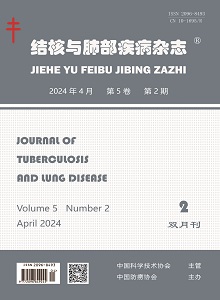Objective To explore the diagnostic value of coagulation screening indicators and D-dimer test results in clinical classification of COVID-19. Methods Clinical data of 72 COVID-19 patients diagnosed in Fuzhou Pulmonary Hospital, Fujian from January 23, 2020 to February 26, 2020 were collected and retrospectively studied. The blood coagulation screening index and D-dimer level of patients were tested on and during hospitalization, and progression. The blood coagulation screening index and D-dimer samples were excluded if not simultaneously tested or the test items not incomplete. Finally, a total of 147 results were obtained. According to different clinical classification on the day of blood collection, the patients were divided into mild group (mild and common types, n=72) and severe group (severe and imminent types, n=75). The coagulation screening indicators include activated partial thromboplastin time (APTT), thrombin time (TT), prothrombin time (PT) and plasma fibrinogen (Fib). Receiver operating curve (ROC) was used to analysis the relationship between coagulation screening indicators and D-dimer levels, and the severity of the disease, as well as the diagnostic value of clinical classification. Results The levels of TT, PT, and Fib in the D-dimer and coagulation screening indexes in the severe group were significantly higher than those in the mild group (0.99 (0.67,1.63) mg/L vs 0.04 (0.02,0.16) mg/L, Z=-8.780, P<0.001; 13.05 (12.41,13.70) s vs 12.58 (11.93,13.59) s, Z=-2.450, P=0.014; 12.40 (11.70,13.20) s vs 11.65 (11.20,12.20) s, Z=-4.500, P<0.001; 3.99 (3.23,4.75) g/L vs 3.36 (2.76,3.91) g/L, Z=-3.600, P<0.001), while the difference of APTT was not statistically significant (27.20 (24.80,34.00) s vs 28.25 (25.50,30.55) s, Z=0.060, P=0.951). ROC curve showed that the area under the curve of D-dimer was 0.917 (95%CI: 0.869-0.964), higher than those under TT, PT and Fib (0.617 (95%CI: 0.526-0.709), 0.715 (95%CI: 0.623-0.799) and 0.672 (95%CI: 0.585-0.759), respectively). When the Youden index was the maximum (0.756), the critical value of D-dimer was 0.364 mg/L, the sensitivity and specificity of diagnosis in severe group were 86.7% and 88.9%. Conclusion D-dimer index in peripheral blood had high diagnostic value for classification of COVID-19, and could be used as an indicator of clinical diagnosis and treatment.

 Wechat
Wechat